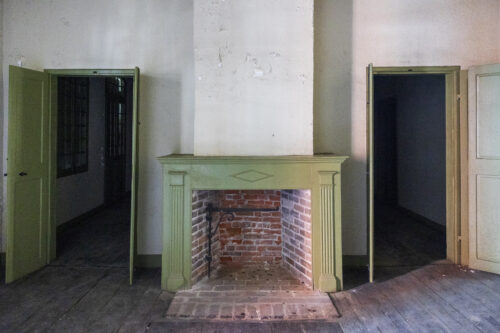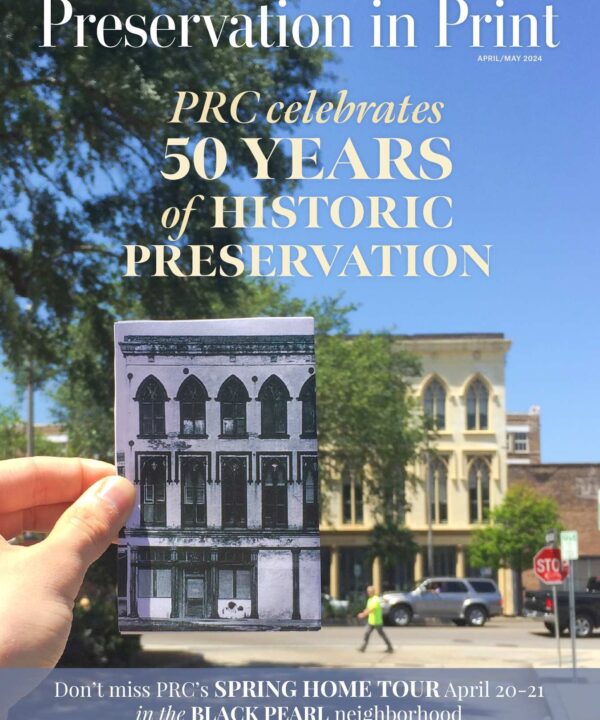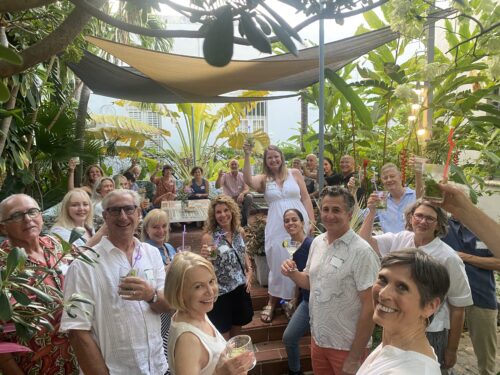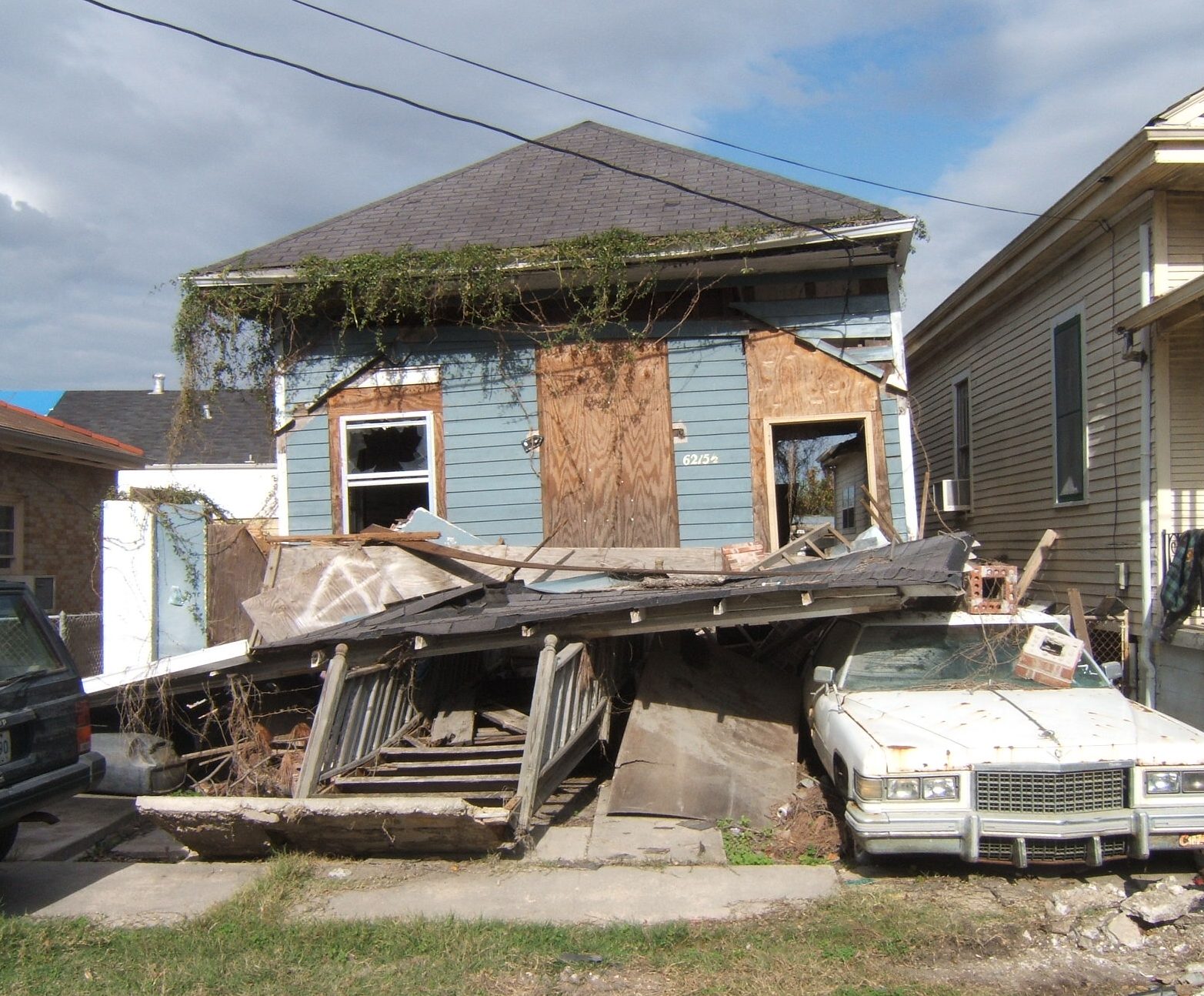It wasn’t a question of if the Preservation Resource Center would respond after Hurricane Katrina. It was how soon. The answer: very soon.

“The PRC, its headquarter undamaged, got busy the day after the storm,” former executive director Patricia Gay wrote in Preservation in Print in April 2014.
Thousands of buckets of materials to help residents clean their homes were prepared and distributed. Tarps and generators were also given out.
Larger projects would follow, including gutting and rebuilding hundreds of homes so families could return, and building new “Katrina cottages.” Fundraisers in New York attracted celebrities, who donated to the cause. The PRC rallied support from around the world to ensure the necessary work could be done.
By October 2005, just weeks after the levees broke on Aug. 29, PRC staffers were already at work across New Orleans.
HOUSING HELP
The PRC launched the “Home Again” program, leading to grants, gap funding and full-scale rehabs of historic homes thanks to the support of the National Trust for Historic Preservation and countless volunteers from around the world.
The PRC had a staff of fewer than 20 prior to Katrina; its numbers surged to more than 90 in the years of recovery.
On Dec. 14, 2007, the Historic District Landmarks Commission approved Operation Comeback’s plan to build Katrina Cottages in the Lower 9th Ward’s Holy Cross neighborhood. The one- and two-story homes could be quickly and inexpensively built. They also served another purpose.
“Naturally, PRC’s focus is on restoring historic buildings,” Gay said at the time. “But when we’re faced with vacant lots it’s important to set an example for new construction.”
Work commenced quickly to protect historic homes and commercial structures deemed “unsavable” by outside contractors who were not familiar with New Orleans’ resilient historic building materials and were quick to demolish. Many of these structures suffered little to no damage and could be used for badly needed housing.
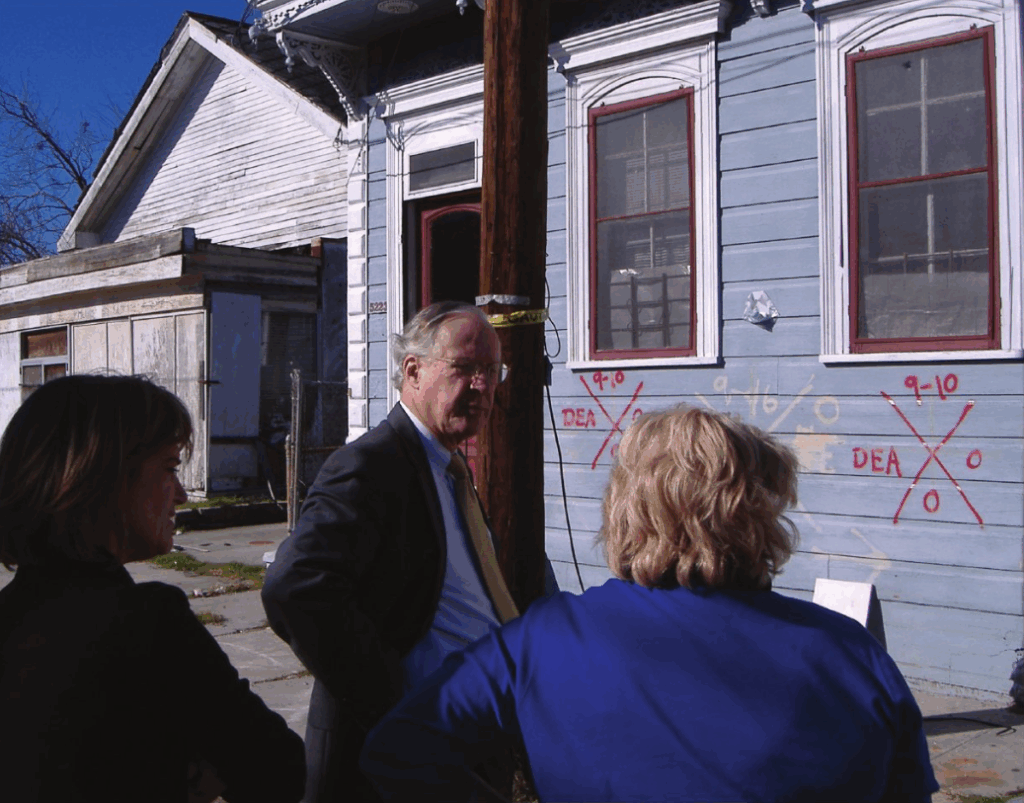
“The older buildings in New Orleans have withstood decades — even centuries — of storms before,” former National Trust Director Richard “Dick” Moe wrote in the February 2006 issue of Preservation in Print. “They’re tougher than we might think, so we shouldn’t call in the bulldozers until we’re absolutely sure there’s no alternative.”
PRESERVATION EFFORTS
PRC staff tracked demolitions for years and regularly met with FEMA to oppose unnecessary demolitions. While many buildings were lost — including a huge amount of significant Mid Century Modern-style architecture — a lot of historic residences were saved through these arduous meetings.
In 2008, the PRC established the Preservation Salvage Store to collect and recycle materials for historic homes that would otherwise head to landfills.
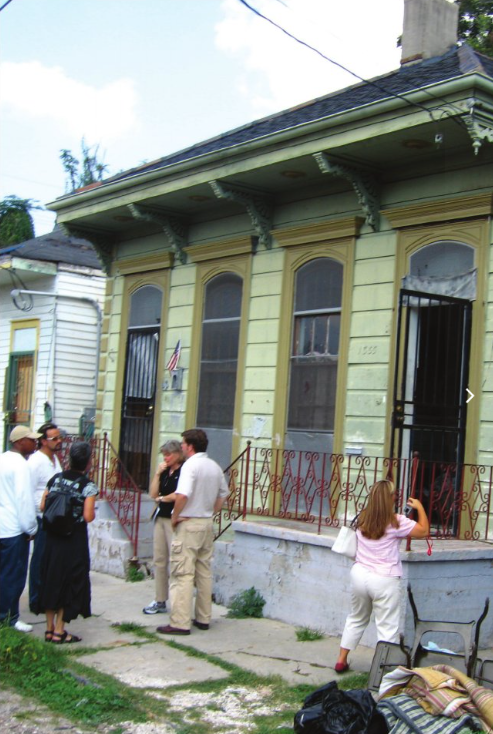
Meanwhile, Rebuilding Together New Orleans restored nearly 500 homes for mostly low-income, elderly residents. Dozens of people moved to New Orleans to join the team and help, and thousands volunteered — many moving to New Orleans after that meaningful experience. “By 2011, Rebuilding Together’s national organization completed its 1,000th home in the Gulf South,” Preservation in Print reported in September 2015, a decade after Katrina.
In that same issue, Gay reflected on the years since the storm and what led to New Orleans’ recovery.
“As we remember this monumental anniversary of a storm that completely transformed our city, we are grateful to the thousands who gave their time and money to help our great city heal,” she wrote. “PRC was instrumental in recovery efforts but only thanks to the generosity of people from around the world.”

